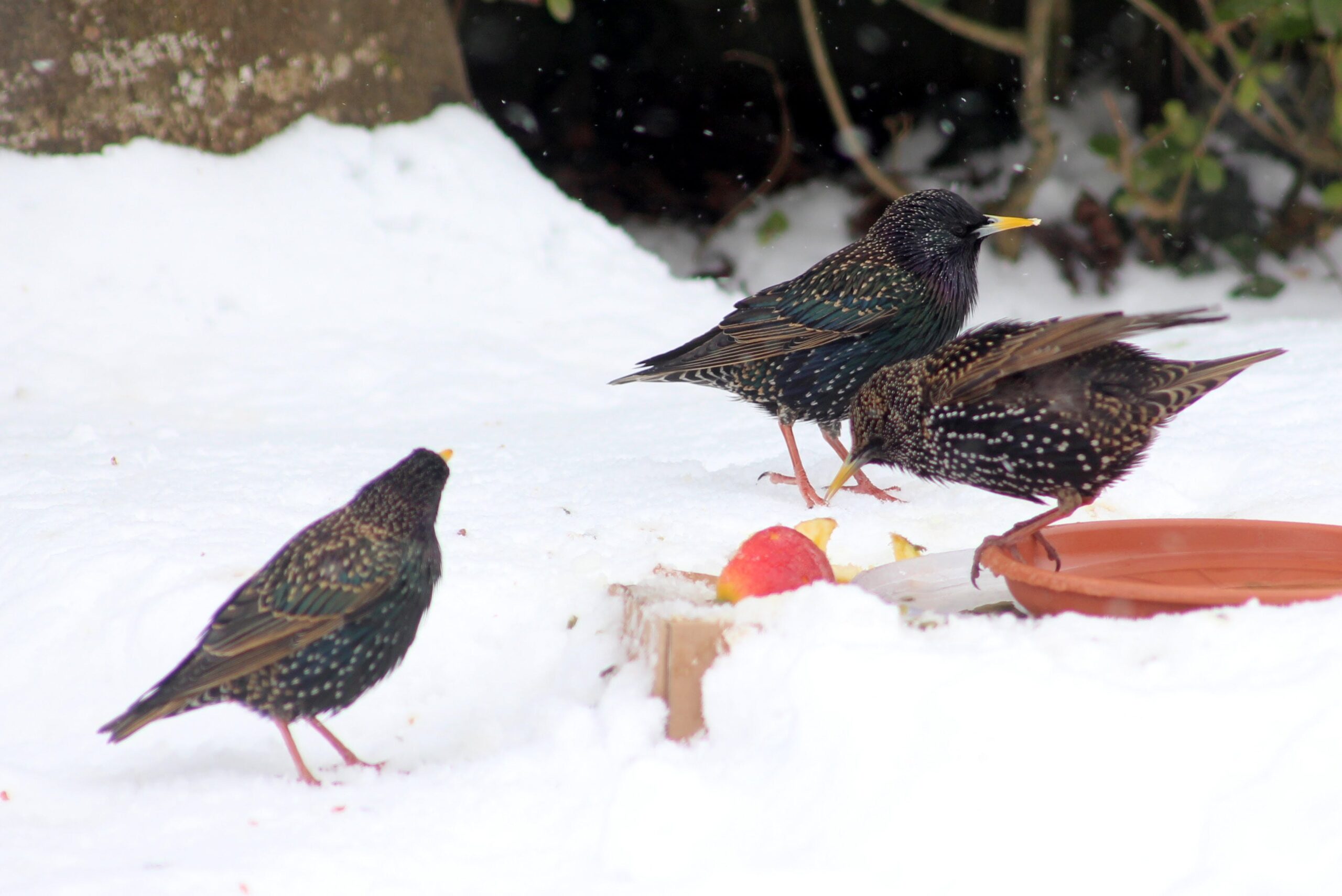What is a starling?
A starling is a medium-sized songbird known for its iridescent plumage, which can range from black to purplish-green. They belong to the family Sturnidae and are native to Europe, Asia, and Africa. European Starlings were introduced to North America and are now a common sight across the continent.
What do starlings eat?
Starlings have an omnivorous diet, meaning they eat both plant and animal matter. They primarily feed on insects, fruits, and seeds. In urban areas, they’re often seen foraging for food on lawns and in open spaces.
Are starlings considered invasive species?
Yes, in some regions, starlings are considered invasive species. They were introduced to North America in the 19th century and have since become highly successful and adaptable, sometimes outcompeting native bird species for resources.
How do starlings communicate?
Starlings are known for their complex and synchronized flocking behaviours. They communicate through a combination of vocalizations, including whistles, chirps, and clicks. This is especially noticeable during their stunning aerial displays known as murmuration’s.
Do starlings migrate?
Yes, starlings are migratory birds in many regions. In North America, for example, some starlings migrate south during the winter months, while others may remain in milder climates year-round.
How do starlings build their nests?
Starlings are cavity-nesting birds, which means they often seek out holes or crevices in trees, buildings, or other structures to build their nests. They create cup-shaped nests using twigs, grass, and other plant material, and they may also line the interior with feathers or other soft materials.
Are starlings known for any special behaviours?
One of the most notable behaviours of starlings is their ability to form massive flocks, known as murmuration’s. These swirling, synchronized aerial displays are thought to serve various purposes, including predator avoidance and social bonding.
What is the lifespan of a starling?
In the wild, starlings typically live for about 2-3 years. However, some individuals can live longer, particularly if they are able to avoid predators and find ample food sources.
Can starlings mimic sounds like some other birds?
Yes, starlings are known for their impressive ability to mimic sounds from their environment, including the calls of other birds and even human-made noises.

